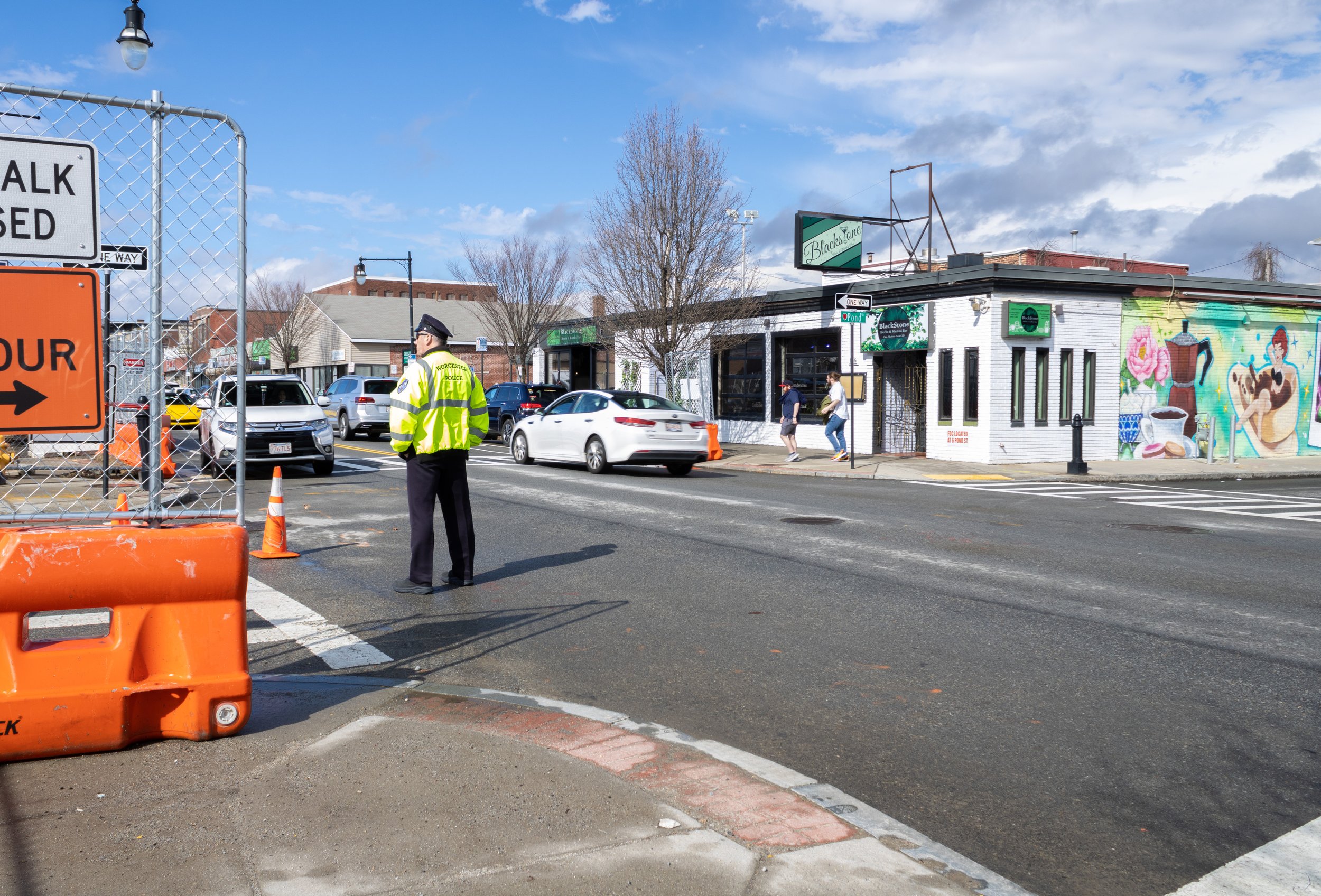
Just Beyond the Divide
Attempts to physically block off and segregate areas and peoples are very prominent in the city of Worcester; I shed light on these attempts in the hopes of starting discussions about them. From large highway projects splitting neighborhoods, made in the interest of capitalistic gain, to fences put in place after the eradication of a houseless population in order to increase the perception of safety: divides are omnipresent yet we have learned to live with them. Those not educated on urban studies and the pervasiveness of gentrification may be able to feel as though they are unwelcomed in certain spaces but are not able to put into words why. I felt this growing up in my own neighborhood when nearby parks and gardens that I used all the time were suddenly gated and required payment to enter. I capture both spaces as they appear beyond divides, such as through chain-link fences, and also metaphorical divides in the presence of residential versus commercial architecture. I used a lower depth of field in order to focus on the space beyond the fence but remind the viewer that these fences exist and create a sense of despair. This photo series is in black and white to heighten the feelings of gravitas, dread, and a false sense of belonging. I placed these images on a black piece of paper to further that contrast between the content and the context it’s placed within. When it comes to photo placement, I placed the larger images towards the bottom to resemble a building with a strong foundation but the uneven spacing is done intentionally in hopes of heightening the sense of there being some other ominous omen present, or cracks in that foundation.
I am influenced by politicians who seemingly always promote union while simultaneously passing bills and motions that promote a greater divide. I am influenced by my many research projects and community service trips during my time at Holy Cross that have required me to do fieldwork. These experiences have opened my eyes to the inequalities. I was able to observe and hear them firsthand through. My photographic practice is one that then displays the inequalities in these rulings. One photo depicts a train underpass that is filled with graffiti through some metal fences. This space was one that was inhabited by those shunned by society including unsheltered people who used nearby resources such as the Saint John’s Church food pantry, the local skateboarders, and the graffiti artists who wanted to practice their craft. It was a place where they can live in unity and mutual respect. But in July 2018, these people were kicked out of the spot by the police to make way for the nearby Polar Park: an asset meant to stimulate the middle-class local economy. The only remnants of this forgotten past is the graffiti that lines the walls which almost resemble ancient cave paintings. In this photo, I use a low depth of field and include the blurred fence that now surrounds the space.
In another photo, I depict fences that appear in residential neighborhoods. Worcester residents, many of whom live in triple-deckers, do not have outdoor yards and thus the streets are where they spend much of their time. The lack of walkability and necessary businesses such as supermarkets are a testament to the inequalities that people in these neighborhoods face. In place of these locations are commercial businesses (such as the heating and air conditioning wholesale business depicted) that take advantage of the low-rent buildings and do not do anything for the locals. They are a nuisance that takes up space only in the interest of capital gain. There is an unbalanced dichotomy in the real world that I captured through the subjects of the pieces.









